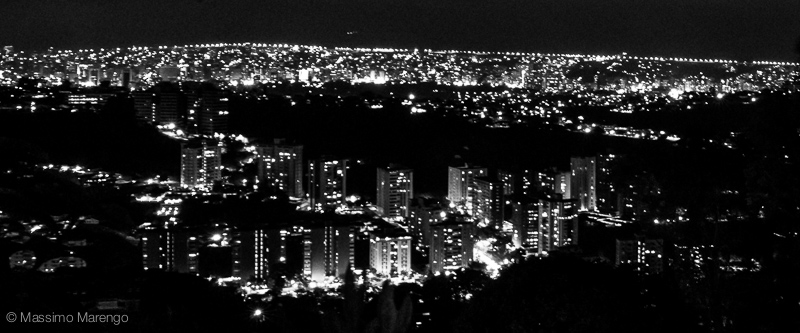 |
| Caracas, Venezuela (December 16, 2004) |
In 2004 we spent our summer holidays in Mayli's country, Venezuela. At the time I was experimenting with the previous incarnation of this photoblog, and decided to document our trip by posting one photo each day, as an excuse to tell some story of what we were doing and seeing. The diary was popular at the time, but then disappeared from the internet when at the same time the server hosting my site crashed, I changed university (starting an all-time-consuming tenure-track) and moved to another city (where for years our internet connection was too bad to support a new server). I thought that the blog, and the venezuelan diary, were gone for good. However, no good deed ever gets unpunished and, as they say, once you put something on the internet, it is not possible to remove it in a complete way. Sure enough, all text from my old photoblog is actually still available from the "Wayback Machine", including the "Venezuela Diary". Since the resurrection of my photoblog (consequence of acquiring a new computer, getting tenure and fiber internet at home), it is time to put back the travel diary of that trip to Venezuela, similarly to what I have already done with my "Japan Diary".
One word of caution: a lot has changed in Venezuela since 2004, and most importantly my own attitude with respect to what is happening in Venezuela has changed as well. In 2004 Venezuela was in its fifth year of its "Bolivarian Revolution", the political process that followed the 1999 democratic election of Hugo Chavez as president of the country. In 2004 the political conflict in the country was at its highest, following a failed recalled referendum just a few months before, a disabling lockout of the national oil industry two years before and a failed coup d'état in April 2002 when Chavez was briefly imprisoned and the head of the Chamber of Commerce installed by a faction of the military in his place. When I traveled in Venezuela in 2004, the Chavez government was a hugely popular socially progressive movement under siege by strong economic interests within Venezuela and abroad, and under threat of being undemocratically overthrown by corrupted opposition parties.
Since then many things have changed. First of all, Chavez himself has died, after a long and mysterious illness (mysterious because of his refusal to acknowledge the nature of his disease), during which he left the country to be treated in Cuba for prolonged periods of time. This dramatic epilogue came after years of heightened cult of personality, with Chavez assuming a growing concentration of power, amid purges aimed to remove dissenting voices from his entourage, increasing corruption and inefficiency at all levels of government, cases of human rights violations and widespread suppression of the freedom of the press. Today Venezuela is a society less free than it was in 2004, its economy and infrastructure are in shambles and the post-Chavez "bolivarian" government has a lock on the legislative, judicial and executive power that prevents the country from being a functioning democracy.
That said, the travel diary that I am going to re-published in this web site should be read in the context of the situation as it was in 2004. From time to time I will try to complement the original text with updated information that was not available when the diary was originally written, but for the most part I will try to preserve the spirit and the thoughts I had in that December of almost a decade ago. The first installment of the diary will appear in the next post.



























